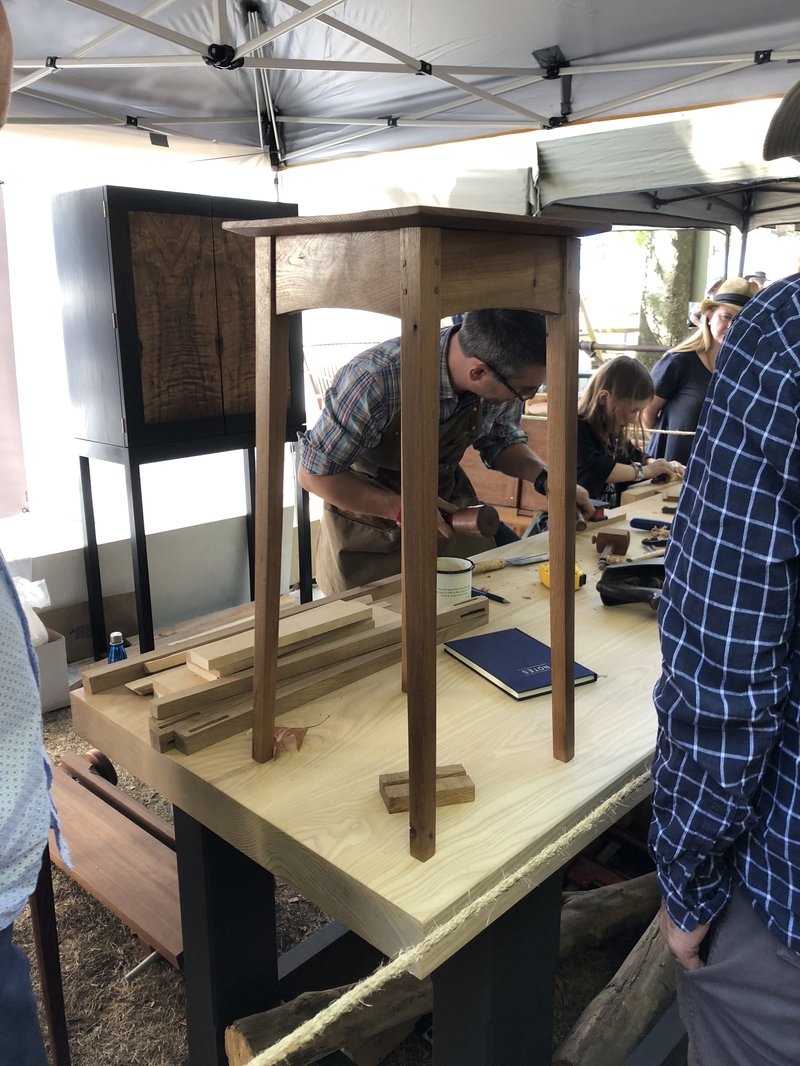Hand tool woodworking philosophy: When do electrons start to make sense?
March 12, 2018
I'm currently a hand tool only woodworker. Aside from a powered cordless drill, everything that touches the wood is powered by my own body. Besides the romantic nature of this philosophy, there are a number of distinct advantages.
Hand tools are cheap. Very cheap. Good quality, powered stationary tools start at around $1000. I could have a whole toolbox of hand tools that would let me do pretty much anything for less than the cost of a single stationary tool.
Hand tools produce either no dust or very large particles. Large enough to be easily caught by gravity, or failing that, your bodies existing physical protection systems such as the hairs and mucus in your nose. Powered tools produce far, far finer particles in significantly greater numbers. This then requires complex, expensive dust collection systems in order to avoid respiratory problems. These systems also need their own power, and produce their own noise.
Hand tools are quiet. They only make noise when actively working the wood. The loudest tool I have is probably the combination of my mallet and chisel. Powered tools and noisy, and can permanently damage your hearing without proper protection. If you are a kind neighbour, your usage is limited to daylight hours.
Powered stationary tools take up a lot of room. I work in a single car garage attached to our rented house. I dont have a lot of room, and even if I did, the prospect of transporting a workshop full of tools when we next have to move is a little daunting.
These are the reasons I have used to avoid getting any stationary tools up till now.
After finishing my last project, a pair of bedside tables, I estimated how long stock preparation had taken compared to the rest of the project, and put it in the ballpark of 75%. Looking at this number, and the considerable list of projects in my backlog, I started to wonder if employing electrons could help me shave down this list any faster.
Timed tables

This weekend I started working on a very simple plant stand, inspired by this table by Christoper Scott I glimpsed at the Lost Trades Fair on the weekend. I wanted to record the time I spent on each individual step of the project - rough stock prep, final dimensioning, marking, joining, cleaning, etc.
At this stage I have dimensioned the stock, marked and cut all the mortices, and marked all the tenons. This is the time breakdown in hours so far:
Sharpening: 0.25
Rough stock preparation: 1.5
Final
dimensioning: 6
Marking up: 0.75
Cleaning: 0.5
Joinery:
1.5
In this case the stock prep and dimensioning included ripping down each of the 4 aprons, as well as ripping the 35mm square legs from much larger stock. I'd say this is pretty typical for a table for me. All this stock was machine surfaced from the timber yard and wasn't rough-sawn. I cleaned up all the faces using the handplane before making a square face and edge, then marking and planing the opposite sides to their final dimensions.
Of course, since I haven't yet finished, the stock prep stages are taking up a larger proportion of the job right now compared to the end. Still, 7.5 hours of total stock prep is a considerable amount of time.
I'm going to keep tracking the time spent on various parts of this project, and use this to see if buying a stationary tool such as a combination thicknesses/jointer makes sense. I'll post part two in the next couple of days once this project is finished.